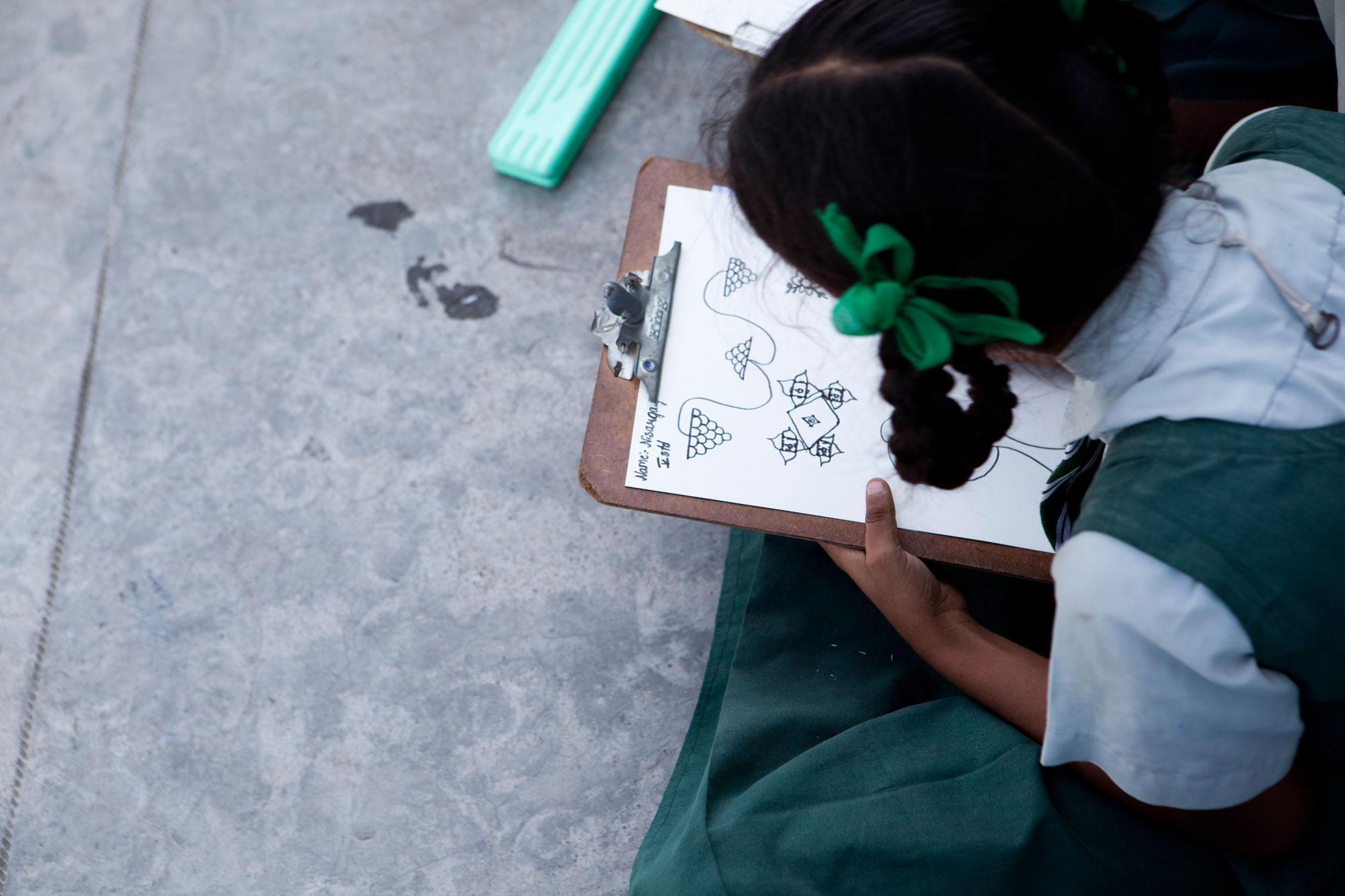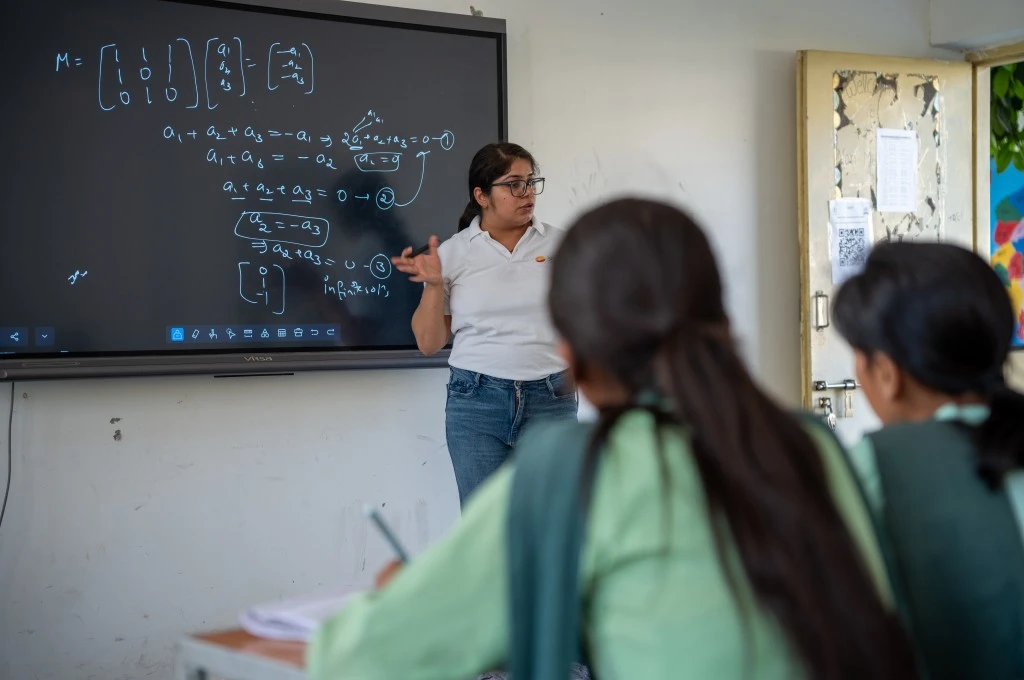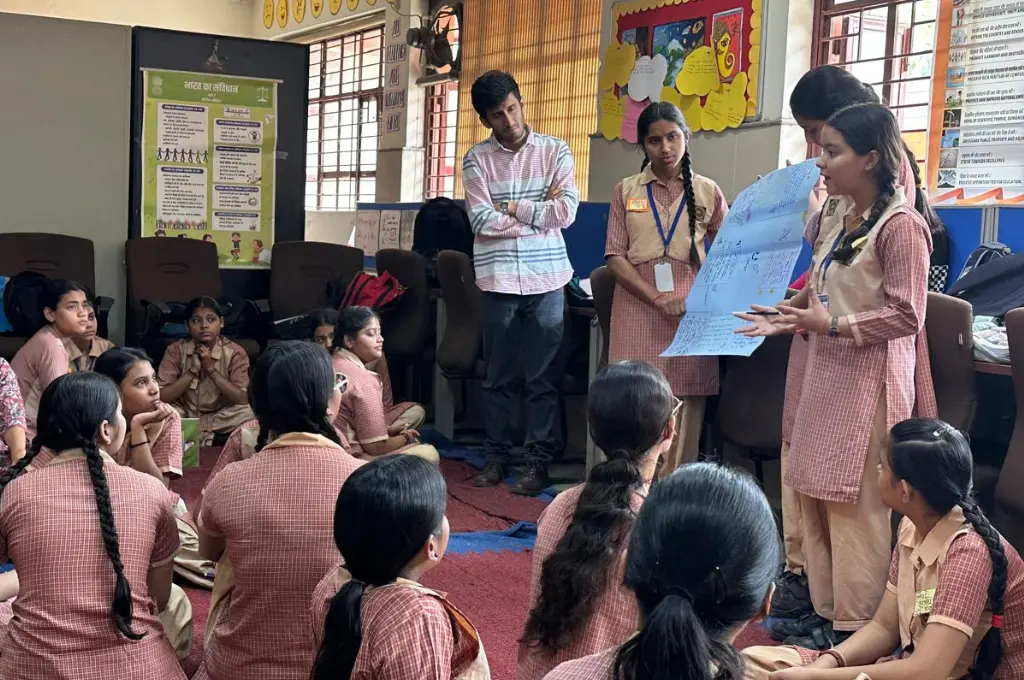There is a growing use of the phrase socio-emotional learning (SEL) in India today. The New Education Policy draft released in 2019 mentions it explicitly, when it recognises the need to conceive education in a more encompassing fashion, ensuring that students become both academically as well as socially and emotionally competent.
Socio-emotional skills in the context of school-related teaching and outcomes can be understood as the beliefs, attitudes, and behaviours that allow children to manage themselves, as well as their relationships with others.
Socio-emotional skills can be understood as the beliefs and attitudes that allow children to manage themselves, as well as their relationships with others.
Some examples of what this looks like include being aware of one’s strengths and weaknesses, having the ability to self-regulate and manage stress, knowing how to understand diverse perspectives, and making a choice after evaluating pros and cons. These skills are malleable throughout our lives and there is converging evidence that they predict academic success and positive long-term life outcomes.

Many reports suggest employers and companies rank skills such as problem-solving, collaboration, and emotional regulation—which are all part of socio-emotional skills—as the top-most skills while recruiting. There has been an accelerated rate of research produced in designing and measuring socio-emotional skills for different age groups and populations.
Given this, there is a rising surge of nonprofits who have emerged in this area over the last few years. With this in mind, the objective of this piece is to present relevant understanding from the field which could be key in the work many are trying to undertake in SEL.
Related article: Education, social mobility, and the RTE policy
1. Focus on what we know
A meta-analysis—the study of studies done in an area, and in this case, a study that looked at all the documented SEL programmes in the world—was conducted in 2011. The study highlighted the SAFE approach that effective SEL programmes used.
SAFE stands for Sequenced, Active, Focused, and Explicit. The study found that programmes that were guided by this principle were often more efficient and had better outcomes. One way to understand what it means in the context of implementing a programme, can be the following four prompts below:

- Sequenced: Does the programme use a connected and coordinated set of activities to achieve its objectives relative to skill development?
- Active: Does the programme use active forms of learning (involving movement, participation, practice, and so on; and done through role play and other experiential formats) to help youth learn new skills?
- Focused: Does the programme have at least one component devoted to developing personal or social skills?
- Explicit: Does the programme target specific SEL skills rather than targeting skills or positive development in general terms?
2. Choose a framework
There have been 136 frameworks developed in the field of SEL. This can be confusing to people given the plethora of options in going with the best possible approach.
Choosing a framework could sound difficult, but there are ways to do it. One way to go about it is to make a list and evaluate them on a few criteria such as:
- How clearly is it defined?
- How balanced are the competencies? Does it include interpersonal, intrapersonal, and cognitive competencies to the same extent?
- How appropriate is it for the age group you are working with?
- Does it fit into the context? Is it sensitive to the cultural variation you are working with?
- Does it have empirical evidence to back it up?
As you work in the field, keep refining and modifying it, as guided by the context and the experiences. It’s important to choose a framework through a systematic approach, since that guides everything else that you will do.
3. Take feedback
Any SEL framework that you might have chosen will never be perfect and all encompassing. The only way to make it better is by seeking feedback from stakeholders—this should include young voices (children and adolescents), as well as teachers, administrators, and parents. One way to do this effectively is to incorporate feedback sessions into workshops, and use them not just to tick boxes, but to add value to the programme.
4. Write an implementation procedure
The same meta-analysis referenced above also sheds light on the fact that one of the biggest challenges in finding out what works in SEL and what doesn’t, especially in the international context, is the lack of implementation details or documentation of the programmes. So, when a claim is made that this programme worked, there is no evidence to back it up. Recording (not necessarily writing on paper), at regular intervals therefore has to go hand in hand with the work we do.

Identify where children spend their most time, and use such areas as potential places to start socio-emotional learning activities from. | Photo courtesy: Charlotte Anderson
5. Delve into teacher reflections as a way to build capacity
Many nonprofits highlight teacher capacity issues in fully embracing programmes on SEL. In situations where the teachers say something like, “I know math very well but not SEL”, how should nonprofits work with them?
One approach has been to always start with the teacher’s reflection of their personal math history. What were their aspirations when they were younger? Their failures? What do their own memories with this subject look like?
Take significant time to dive into what the teachers themselves feel, and talk about how their experiences relate to language learning. Reflecting on that will help understand how children will feel in the classrooms.
6. Choose spontaneous entry points for children
Many successful SEL programmes started where the learners already were, by natural design. For young children, this could be activity rooms or playgrounds, or street corners and fields. Identify where the children you want to work with spend their time, and use such areas as potential places to start SEL activities from.
Related article: What standardised testing doesn’t tell us about learning
7. Keep in mind: Our vocabulary and language are more important than we think
Not only does language have a deep impact on the individual child we are talking to, but it also contributes towards the culture we are constructing around ourselves. So, whether it’s us labelling each other as having and not having resilience (when really, how resilient you are can change with time and in a given situation), or a teacher telling a child they will always be poor at math—all are equally detrimental to the idea of SEL itself.
8. Talk about difficult topics in classrooms
Several discussions amongst practioners have led to a consensus that we must prepare children in some manner for what lies ahead of them. Therefore, classrooms have to become places for difficult conversations. They will have to be around class, caste, gender, urban-rural divide—and everything else that affects the lives our children will lead.
Most often, the argument against having these conversations is that it might not be developmentally appropriate, and the children might not be prepared. However, the fact is they will not be prepared if we don’t prepare them.
The fact is children will not be prepared to have difficult conversations if we don’t prepare them.
So, the question we should be asking instead is: How do we engage in difficult conversations with our children which are also age appropriate and context based?
There are several age-based strategies which could be used for this. But whatever you choose, the goal has to be to give children mechanisms they can use as protective strategies when surrounded by difficult circumstances.
9. Explore debate as a tool
Debates have proven to be effective tools to help children negotiate and navigate difficult spaces. One way to engage this would be to construct a conversation that requires children to use both empathy and evidence.
This has been done in a few places by organising seminars on topics such as gender, class, and caste, where students read on the topic, bring their past experiences, and present their understanding to the rest of the class. There might be different views on the same issue. For example, on the topic of gender what a girl presents would be very different than what a boy would. But when the class is exposed to the diversity of angles, the whole unit becomes more aware and informed.
The last piece added to the format could be finding solutions to some problems or situations together which are doable, such as speaking up against harassment or understanding opportunity gaps in society, and how not to give up by supporting each other.
10. Remember: Children are watching us
Children learn the most through role modeling (that is, by watching others). Teachers and nonprofits who work with children and are able to embody the skills and learnings from a SEL approach, instil responsible attitudes, mutual respect, empathy, and self-regulation, among other skills; and they do so with more efficiency than those that implement direct lessons.




